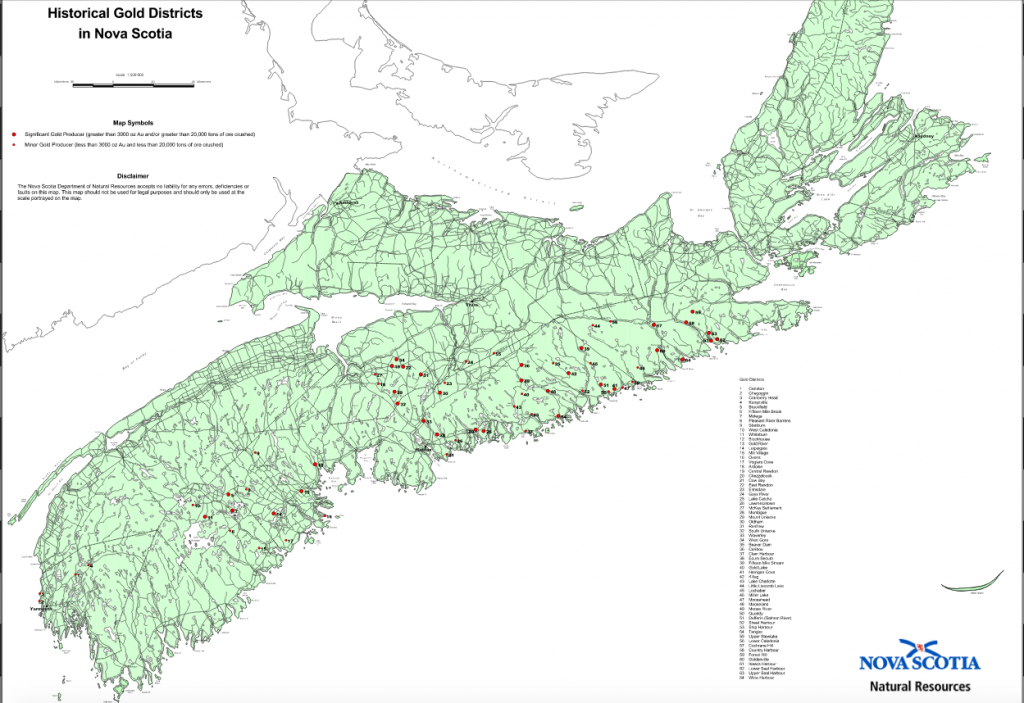The making of a toxic mess and the uncalculated cost of previous gold rushes

Toxic tailings from previous gold rush at Montague Mines in Halifax Regional Municipality remain exposed, and recreational users are exposed to them. Photo: Joan Baxter
This is Part 1 of a three-part story, an earlier version of which appeared in March 2020 in the Halifax Examiner, about the toxic legacy from historic gold mines in Nova Scotia, which its citizens will be paying many millions of dollars to try to clean up, and how the contamination at just one of these sites — Montague Mines in Halifax Regional Municipality (HRM) — is still affecting lives today, and may also affect a large new residential subdivision that is proposed for nearby Port Wallace, between the Highway 107 extension and Waverley Road.
It’s a complicated mess, with a lot of conflicting interests, some powerful players — the Shaw Group through its subsidiary Clayton Developments, and its president, former HRM Chief Administrative Officer Richard Butts — and different levels of government and public agencies.
It’s also been difficult to get clear answers to some straightforward questions about the situation, but I’ll get to that.
In Part 1, we’ll set the scene with a look at gold mining in Nova Scotia and how we got to where we are.
This tale begins with colonialism, with the theft of others’ lands and appropriation of natural assets that has always driven it.
In 1578, Queen Elizabeth I of England granted a patent to “adventurer” Sir Humphrey Gilbert, which gave her the right to one-fifth of any gold and silver he found in eastern North America. Gilbert’s expedition failed to make it across the ocean, so Elizabeth didn’t get her hands on any gold from what is today known as Nova Scotia.
In subsequent centuries, many settlers reported seeing gold in the province, and names such as Cap d’Or and Bras d’Or suggest that Acadians were well aware of its presence. But it wasn’t until news of the gold fever that was gripping Australia and California in the mid-1800s reached this part of the world that settlers started hunting for gold and taking its presence seriously.[1]
One of these was John Pulsiver, a farmer from what is now Chaswood in the Musquodoboit Valley. According to his own account, in 1860 Pulsiver was camping near Mooseland with three Mi’kmaq guides – James, Paul and Francis Paul. They had run out of provisions, so one of the party went off to procure supplies. Pulsiver waited in the forest, and happened to spy a piece of quartz in a nearby brook. When he broke it into pieces, he found pieces of gold.
Pulsiver took his news to Premier Joseph Howe, who reportedly scoffed at him, telling him to go home and mend his old shoes.
Pulsiver’s account, like that of several others wishing to claim they had been the first to “discover” gold in Nova Scotia, was published in the 1868 book by Alexander Heatherington called “The gold fields of Nova Scotia.”
Of course it would be misleading to say that Europeans “discovered” anything on this continent, including gold in Mi’kma’ki. The Mi’kmaq knew about the presence of gold, which they called wisawsuliewei, and would show it to European immigrants and visitors when they were guiding them. But they had no special fondness for the metal, and certainly didn’t mine it, polluting the water and destroying land that sustained them.
So it doesn’t really matter which of the settlers lays claim to the first gold find in Nova Scotia. What matters is that all the speculation about Pulsiver’s and others’ finds unleashed the first of three gold rushes in the province – one that lasted until 1874, a second from 1896 to 1903, and a third from 1932 until 1942. Continue reading Port Wallace Gamble: The real estate boom meets Nova Scotia’s toxic mine legacy (Part 1)
